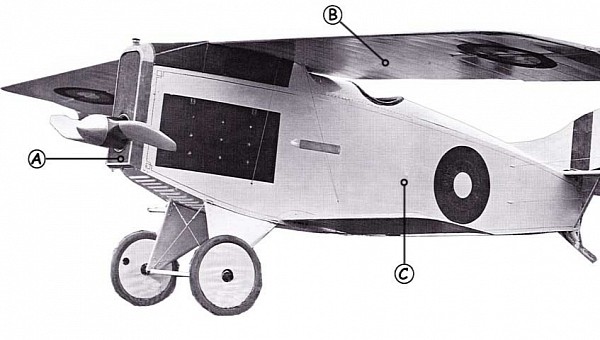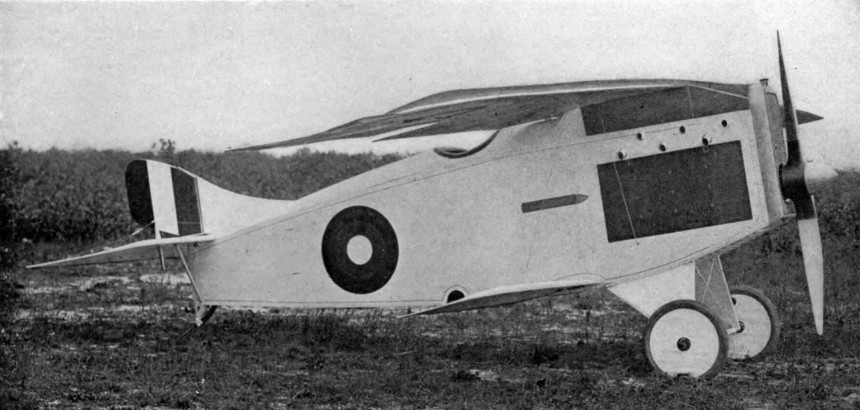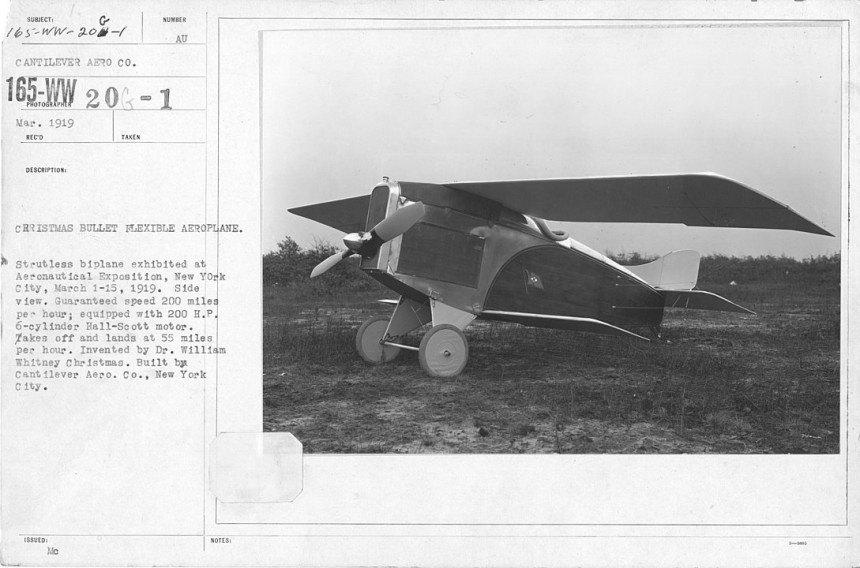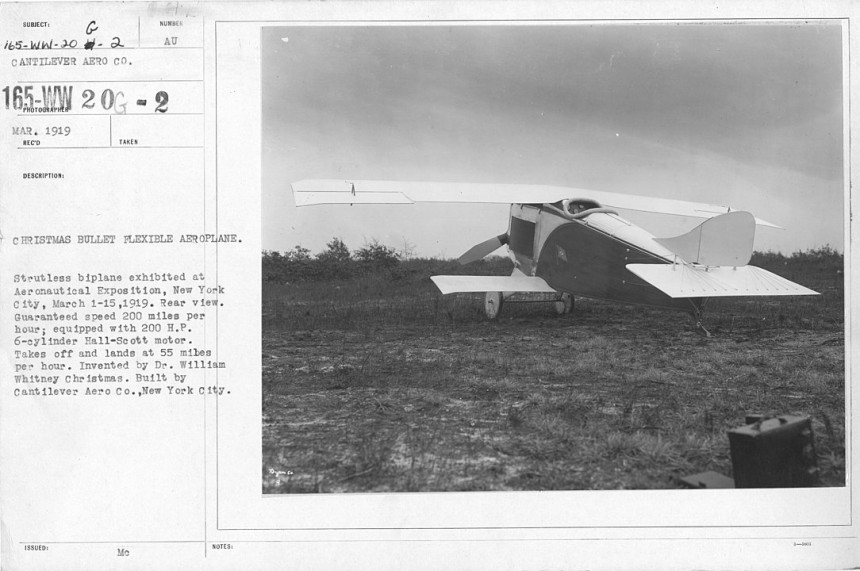Happy Holidays, everybody! Allow us to celebrate the season by looking at an airplane with the word Christmas right in the name. As it happens, the plane in question is perhaps the biggest steaming pile of you-know-what that ever left an American production facility.
This is the story of the Christmas Bullet. An airplane that has a body count which equals its production run. It's the only airplane with this dubious distinction we're aware of. Yet, just from peeping at the thumbnail for this little expose, one can't help but think there's something not quite right about this oddball of an airplane.
Over the years, we've covered some truly polarizing figures in the automotive/aerospace realm. Robert Moses, Carlos Ghosn, the Fighter Jet Mafia, the polarizing types whose reputation precedes them wherever they happen to be. If you ask us, Mr. William Whittney Christmas, whose Wikipedia byline describes him as a "physician, pioneer aviator, and supposed con man," might just take the cake in terms of brazen tomfoolery. It's all the more strange hardly anyone today remembers him.
Perhaps in the era of crypto-rug pulls and FTX's astonishing fall from grace, we've perhaps become accustomed to highly publicized corporate fraud. But even by crypto-bro standards, some of Dr. Christmas's work practices begged belief. Born in North Carolina in 1865, William Christmas earned his fortune as a physician, graduating with a medical degree from George Washington University in Washington, D.C.
But as the man himself would have told you, Dr. Christmas was a man who found himself jealous of birds. Or, at the very least, the dawn of mankind awakened a passion in his mind. If only he were able to execute it without blowing something up. In his time away from his medical practice, Dr. Christmas sketched ideas for powered bi-planes. Most of these designs never made the leap to our mortal reality.
That didn't stop Dr. Christmas from socializing with big shots in America's pioneer era of aviation. According to centuries-old legends, Dr. Christmas spent the better part of 1908 touting that he'd designed, built, and tested his own airplane. The only problem being Dr. Christmas claimed his plane spontaneously burned down before anyone else had seen it.
Some sources also claim Dr. Christmas's cherished mystery plane was stolen. In an era where maybe a few dozen or so people on the planet even knew how to fly, that claim sounds pretty "sus," if you ask us. Because Twitter and Linkedin didn't exist 114 years ago, people were forced to take Dr. Christmas at his word. In the pro-wrestling business, they call this kind of charisma "cutting a good promo."
Dr. Christmas certainly enticed people with his seemingly fast off-the-cuff knowledge of aviation. By 1909, Dr. Christmas was able to secure funding to found the Christmas airplane company in Washington D.C. By 1918; the company had moved to the town of Copiague on Long Island, New York. Between those two points in time, Dr. Christmas penned an op-ed editorial piece in, of all places, the gosh-darn New York Times.
In this article, he detailed the revolutionary airplanes he claimed to have developed. Because Reddit wasn't around to sound the alarms like an army of Yorkies with a mailman at the door, Dr. Christmas was lined up nicely for post-WWI investments. The sole two results of this funding were the twin examples of the Christmas Bullet. Built by the Continental Aircraft Company of Amityville, Long Island, New York, there are multiple levels of "nope" factor going on with this one. Even just on first impressions.
On most biplanes worth flying in this era, wooden wings bound together by canvas and fabric were held rigid by lengths of wire. In a move that can only be described as a gimmick, Dr. Christmas thought cleverly that his airplane ditched the wire struts. Powering this flapping bird of an airframe was a downsized variant of the iconic Liberty engine. A V6 aeronautical engine from the same famed line as the L-8 and the L-12.
The U.S Army Air Service, the earliest forbearer to the Air Force, explicitly told Dr. Christmas only to ground test his new airplane until it could be verified that the thing could even fly. In business, we call this foreshadowing. The good doctor proceeded to ignore the military's explicit request and hired a pilot to take the Christmas Bullet up for a test flight. A man by the name of Cuthbert Mills.
It's all the crueler because in January 1919, mere seconds after this claptrap took to the sky, the diminutive strutless cantilever wings folded like the top to a tin of beans, fell out of the sky, and killed the pilot. To make matters worse, the man's mother was in the audience. In 2022, this incident would have resulted in a field day for the FAA. Not so in 1919. In fact, no one stopped Dr. Christmas from building a second Christmas Bullet with the same result.
This time, a pilot by the name of Lt. Allington Joyce Jolly horrifically lost his life at the hands of the Christmas Bullet. Christmas? Jolly? How is this not some kind of cruel joke? Dr. Christmas never faced so much as a slap on the wrist for blatantly endangering, then ending the lives of two people.
Dr. Willliam Whitney Christmas lived a long life after the Bullet. He died in New York City in 1960, aged 94, "with money in his pockets, and blood on his hands," according to Hush Kit. Who christened the Christmas Bullet number one on their list of the worst American airplanes ever built. So the story goes, Vincent Bernelli, the Continental Aircraft designer who built the Bullet, was so distraught at the whole ordeal that he dedicated the rest of his life to making advancements in aeronautical safety.
In the years that followed, New York's Long Island region became a hotbed for aeronautical development. Becoming the home to famous design teams like Curtiss, Grumman, and Republic, all three of which built some of the finest, safest, most reliable airplanes ever to fly. So if that's the Christmas eve silver lining you were searching for in this whole debacle, look no further. Merry Christmas to all and to all, a giant, smokey burnout.
Check back soon for more from Celebration Month here on autoevolution.
Over the years, we've covered some truly polarizing figures in the automotive/aerospace realm. Robert Moses, Carlos Ghosn, the Fighter Jet Mafia, the polarizing types whose reputation precedes them wherever they happen to be. If you ask us, Mr. William Whittney Christmas, whose Wikipedia byline describes him as a "physician, pioneer aviator, and supposed con man," might just take the cake in terms of brazen tomfoolery. It's all the more strange hardly anyone today remembers him.
Perhaps in the era of crypto-rug pulls and FTX's astonishing fall from grace, we've perhaps become accustomed to highly publicized corporate fraud. But even by crypto-bro standards, some of Dr. Christmas's work practices begged belief. Born in North Carolina in 1865, William Christmas earned his fortune as a physician, graduating with a medical degree from George Washington University in Washington, D.C.
But as the man himself would have told you, Dr. Christmas was a man who found himself jealous of birds. Or, at the very least, the dawn of mankind awakened a passion in his mind. If only he were able to execute it without blowing something up. In his time away from his medical practice, Dr. Christmas sketched ideas for powered bi-planes. Most of these designs never made the leap to our mortal reality.
Some sources also claim Dr. Christmas's cherished mystery plane was stolen. In an era where maybe a few dozen or so people on the planet even knew how to fly, that claim sounds pretty "sus," if you ask us. Because Twitter and Linkedin didn't exist 114 years ago, people were forced to take Dr. Christmas at his word. In the pro-wrestling business, they call this kind of charisma "cutting a good promo."
Dr. Christmas certainly enticed people with his seemingly fast off-the-cuff knowledge of aviation. By 1909, Dr. Christmas was able to secure funding to found the Christmas airplane company in Washington D.C. By 1918; the company had moved to the town of Copiague on Long Island, New York. Between those two points in time, Dr. Christmas penned an op-ed editorial piece in, of all places, the gosh-darn New York Times.
In this article, he detailed the revolutionary airplanes he claimed to have developed. Because Reddit wasn't around to sound the alarms like an army of Yorkies with a mailman at the door, Dr. Christmas was lined up nicely for post-WWI investments. The sole two results of this funding were the twin examples of the Christmas Bullet. Built by the Continental Aircraft Company of Amityville, Long Island, New York, there are multiple levels of "nope" factor going on with this one. Even just on first impressions.
The U.S Army Air Service, the earliest forbearer to the Air Force, explicitly told Dr. Christmas only to ground test his new airplane until it could be verified that the thing could even fly. In business, we call this foreshadowing. The good doctor proceeded to ignore the military's explicit request and hired a pilot to take the Christmas Bullet up for a test flight. A man by the name of Cuthbert Mills.
It's all the crueler because in January 1919, mere seconds after this claptrap took to the sky, the diminutive strutless cantilever wings folded like the top to a tin of beans, fell out of the sky, and killed the pilot. To make matters worse, the man's mother was in the audience. In 2022, this incident would have resulted in a field day for the FAA. Not so in 1919. In fact, no one stopped Dr. Christmas from building a second Christmas Bullet with the same result.
This time, a pilot by the name of Lt. Allington Joyce Jolly horrifically lost his life at the hands of the Christmas Bullet. Christmas? Jolly? How is this not some kind of cruel joke? Dr. Christmas never faced so much as a slap on the wrist for blatantly endangering, then ending the lives of two people.
In the years that followed, New York's Long Island region became a hotbed for aeronautical development. Becoming the home to famous design teams like Curtiss, Grumman, and Republic, all three of which built some of the finest, safest, most reliable airplanes ever to fly. So if that's the Christmas eve silver lining you were searching for in this whole debacle, look no further. Merry Christmas to all and to all, a giant, smokey burnout.
Check back soon for more from Celebration Month here on autoevolution.











